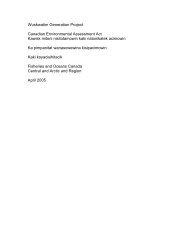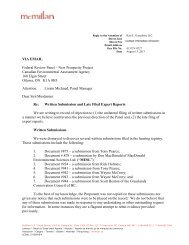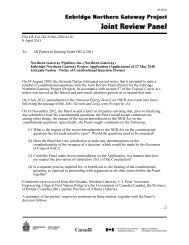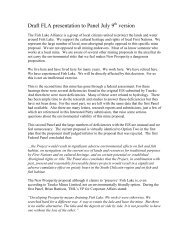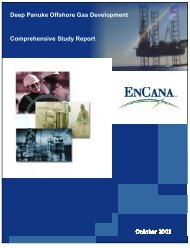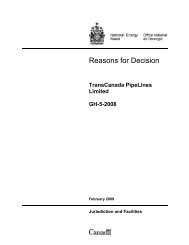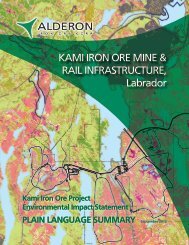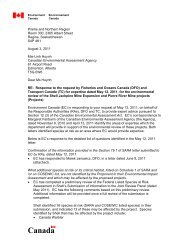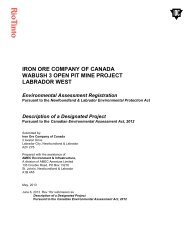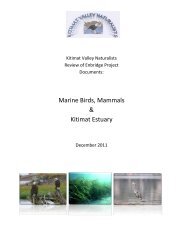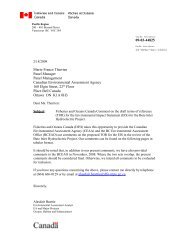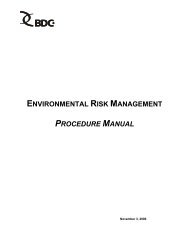BRUCE HEAVY WATER PLANT DECOMMISSIONING PROJECT
BRUCE HEAVY WATER PLANT DECOMMISSIONING PROJECT
BRUCE HEAVY WATER PLANT DECOMMISSIONING PROJECT
Create successful ePaper yourself
Turn your PDF publications into a flip-book with our unique Google optimized e-Paper software.
Bruce Heavy Water Plant Decommissioning<br />
Environmental Assessment Study Report<br />
Ontario Power Generation<br />
Final Submission to CNSC<br />
2.1.2 Option 2: Partial Decommissioning/Partial Mothballing and Selective<br />
Demolition<br />
This option involves decommissioning the Enriching Unit towers, flare stack, pipe racks and<br />
other tall structures to ground level. The other unused buildings and structures on site would be<br />
mothballed. The redundant underground services would be isolated but left in situ.<br />
Removing the tall structures and the pipe racks would reduce the potential hazards from falling<br />
objects and structural collapse. The visual environment would also be improved by the removal<br />
of these landmarks. Leaving the buildings on site and continuing care and maintenance on them<br />
would be costly and would not reduce the eventual demolition cost. This cost could be offset if<br />
the buildings were reused. Some of the buildings on site are currently being used for other<br />
purposes and it is not intended to decommission them at this stage. This option was ranked third,<br />
equal to Option 4.<br />
2.1.3 Option 3: Partial Decommissioning/Demolition to Grade – No Mothballing<br />
This option involves decommissioning the Enriching Unit towers, flare stack, pipe racks and<br />
other redundant buildings and structures to ground level. The redundant underground services<br />
would be isolated but left in situ.<br />
This option has the same safety benefits as Option 2 but with the added advantage that hazards<br />
posed by the redundant buildings would be removed. It would also improve the environment and<br />
reduce the care and maintenance costs. However, it would cost more in the short term to<br />
implement than Option 2. Additionally, the underground services, concrete foundations, etc.,<br />
which would remain after the decommissioning will eventually have to be removed. This option<br />
received the highest score.<br />
2.1.4 Option 4: Partial Decommissioning/Demolition to Grade, Excavation and<br />
Removal of Underground Services<br />
This option involves decommissioning the Enriching Unit towers, flare stack, pipe racks and<br />
other redundant buildings and structures to ground level. The redundant underground services<br />
would be excavated and removed.<br />
Removal of all the redundant services would further reduce the hazards on site and enhance the<br />
environment. This would be a lengthy task and could threaten the integrity of services that were<br />
still required such that they might have to be re-routed. The cost would be higher and the<br />
program longer than for Options 2 and 3. This option was ranked third, equal to Option 2.<br />
2.1.5 Option 5: Complete Decommissioning/Option 4 Plus Removal of Foundations<br />
and Support Piers<br />
This option involves completely decommissioning the Enriching Unit towers, flare stack, pipe<br />
racks and other redundant buildings and structures including their underground foundations and<br />
2-3 December 2002



